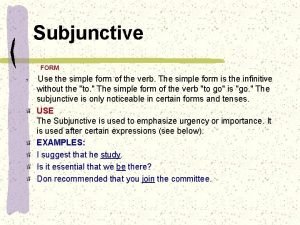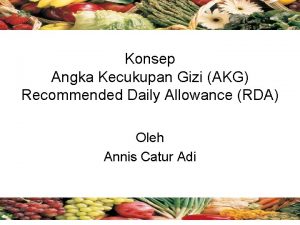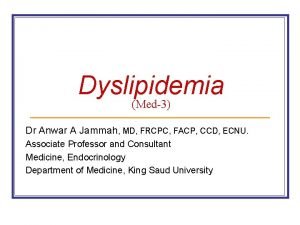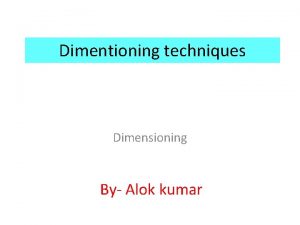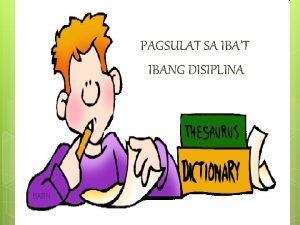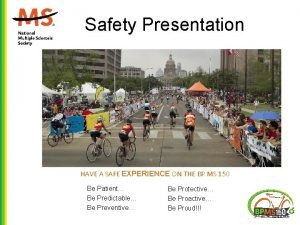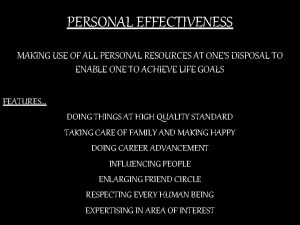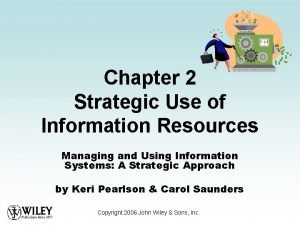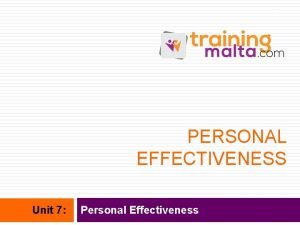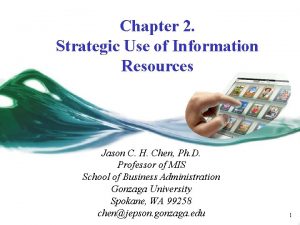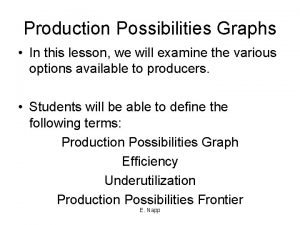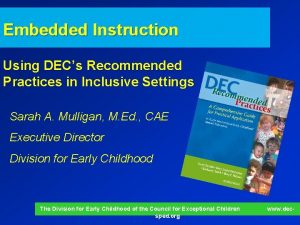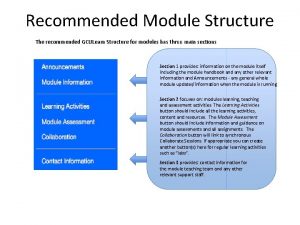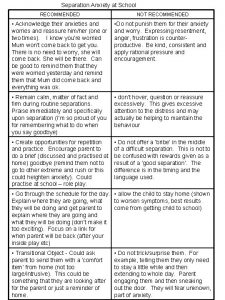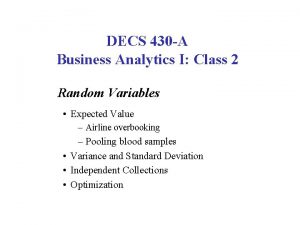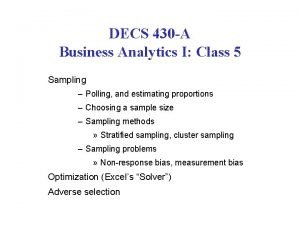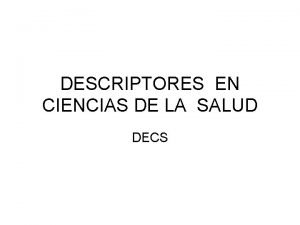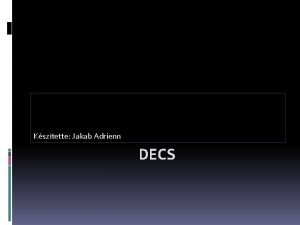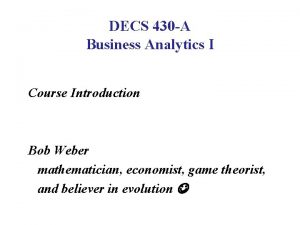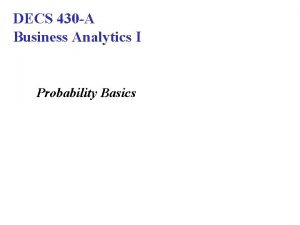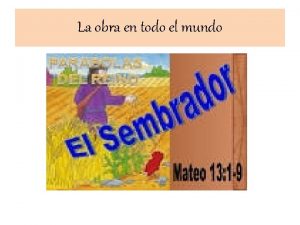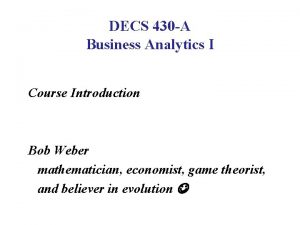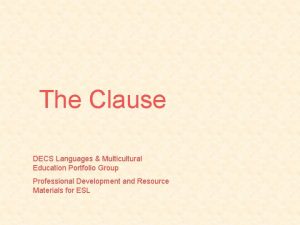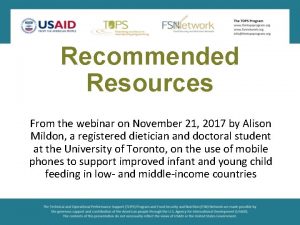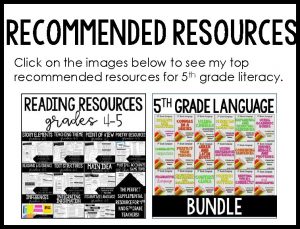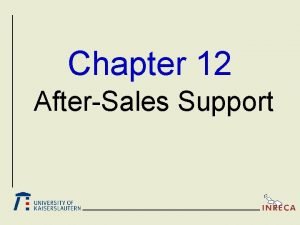Resources to Support the Use of DECs Recommended
































- Slides: 32

Resources to Support the Use of DEC’s Recommended Practices This presentation and handout were developed by Camille Catlett

Shifts in the Early Intervention Field Know Be able to do Evidence-Based Practices Recommended Practices

The three components of Developmentally Appropriate Practice Socially/ Culturally/ Linguistically Appropriate Individually Appropriate Developmentally Appropriate Recommended Practices in Early Intervention/Early Childhood Special Education

Recommended Practices Have the highest impact on outcomes Are supported by research, values and experience Are observable Are NOT disability-specific Can be used in all settings Build on Developmentally Appropriate Practices

F FAMILY A C ASSESSMENT I L INSTRUCTION I T A T INTERACTION E ENVIRONMENT COLLABORATION LEADERSHIP TEAMING AND TRANSITION

Evidence-Based Practices That Support Children in Inclusive Settings





. . . Consider Universal Design for Learning (UDL) principles to create accessible environments UDL means the removal of physical and structural barriers (UD) and the provision of multiple and varied formats for instruction and learning (UDL).

Three Key Concepts of Universal Design for Learning

Multiple Means of Representation kinesthetic Visual auditory

Multiple Means of Engagement UDL: Multiple Means of Engagement Attention curiosity Interests preferences

Multiple Means of Expression UDL: Multiple Means of Expression Typing/texting



• Keep toys and materials novel and interesting • Use toys and materials with high social value • Give positive attention to children playing together

Family F 1. Practitioners build trusting and respectful partnerships with the family through interactions that are sensitive and responsive to cultural, linguistic, and socio-economic diversity. F 3. Practitioners are responsive to the family’s concerns, priorities, and changing life circumstances. F 5. Practitioners support family functioning, promote family confidence and competence, and strengthen family-child relationships by acting in ways that recognize and build on family strengths and capacities

Family F 1. Practitioners build trusting and respectful partnerships with the family through interactions that are sensitive and responsive to cultural, linguistic, and socio-economic diversity. F 3. Practitioners are responsive to the family’s concerns, priorities, and changing life circumstances. F 5. Practitioners support family functioning, promote family confidence and competence, and strengthen family-child relationships by acting in ways that recognize and build on family strengths and capacities

CONNECT The Center to Mobilize Early Childhood Knowledge http: //connect. fpg. unc. edu/

Dilemma Videos (Videos 4. 1 & 4. 2)

Instruction INS 4. Practitioners plan for and provide the level of support, accommodation's, and adaptations needed for the child to access, participate, and learn within and across activities and routines

CARA’s Kit



Interaction INT 1. Practitioners promote the child’s social-emotional development by observing, interpreting, and responding contingently to the child’s emotional expressions. INT 2. Practitioners promote the child’s social development by encouraging the child to initiate or sustain positive interactions with other children and adults during routines and activities through modeling, teaching, feedback, or other types of guided support. INT 3. Practitioners promote the child’s communication development by observing, interpreting, responding contingently, and providing natural consequences for the child's verbal and non-verbal communication and by using language to label and expand on the child’s requests, needs, preferences, or interests. INT 4. Practitioners promote the child’s cognitive development by observing, interpreting, and responding intentionally to the child's exploration, play, and social activity by joining in and expanding on the child's focus, actions, and intent. INT 5. Practitioners promote the child’s problem-solving behavior by observing, interpreting, and scaffolding in response to the child’s growing level of autonomy and self-regulation.

Interaction INT 1. Practitioners promote the child’s social-emotional development by observing, interpreting, and responding contingently to the child’s emotional expressions. INT 2. Practitioners promote the child’s social development by encouraging the child to initiate or sustain positive interactions with other children and adults during routines and activities through modeling, teaching, feedback, or other types of guided support. INT 3. Practitioners promote the child’s communication development by observing, interpreting, responding contingently, and providing natural consequences for the child's verbal and non-verbal communication and by using language to label and expand on the child’s requests, needs, preferences, or interests. INT 4. Practitioners promote the child’s cognitive development by observing, interpreting, and responding intentionally to the child's exploration, play, and social activity by joining in and expanding on the child's focus, actions, and intent. INT 5. Practitioners promote the child’s problem-solving behavior by observing, interpreting, and scaffolding in response to the child’s growing level of autonomy and self-regulation.

http: //www. earlyliteracylearning. org/ General Practice Guides Especially for Parents

http: //csefel. vanderbilt. edu/ • • Research syntheses Training modules Practical strategies What Works briefs Videos Family tools Decision making guides

TACSEI TECHNICAL ASSISTANCE CENTER ON SOCIAL EMOTIONAL INTERVENTION for young children

Go use your influence to FACILITATE change!
 Requirements for erf t2
Requirements for erf t2 Decs remote access
Decs remote access Decs order no. 11 s. 1987 explanation
Decs order no. 11 s. 1987 explanation Recommended alcohol intake per day
Recommended alcohol intake per day Past subjunctive mood examples
Past subjunctive mood examples Explain when rtv and anaerobic sealers are recommended.
Explain when rtv and anaerobic sealers are recommended. Tst rlr
Tst rlr Components of accenture delivery suite ads
Components of accenture delivery suite ads Yashpal committee
Yashpal committee Trip advisor namibia
Trip advisor namibia Nsf proposal status recommended
Nsf proposal status recommended Sannomiya rice recommended
Sannomiya rice recommended Mudaliar committee on education
Mudaliar committee on education Sae j3061 software
Sae j3061 software Rda adalah gizi
Rda adalah gizi Objectives of kothari commission
Objectives of kothari commission Recommended approach
Recommended approach Recommended
Recommended In unidirectional system the dimensions are placed
In unidirectional system the dimensions are placed Mga mungkahing tanong sa pagsulat
Mga mungkahing tanong sa pagsulat 2015 nehrp recommended seismic provisions
2015 nehrp recommended seismic provisions Ms 150 recommended rides
Ms 150 recommended rides Operation transformation process
Operation transformation process Fixed resources and variable resources
Fixed resources and variable resources Renewable resources vs nonrenewable resources
Renewable resources vs nonrenewable resources Major and minor supporting details
Major and minor supporting details Dimensions of personal effectiveness
Dimensions of personal effectiveness Sweden and norway use equal quantities of resources
Sweden and norway use equal quantities of resources Strategic use of information resources
Strategic use of information resources Personal effectiveness framework
Personal effectiveness framework Strategic use of information resources
Strategic use of information resources A graph that shows alternative ways to use resources
A graph that shows alternative ways to use resources Hình ảnh bộ gõ cơ thể búng tay
Hình ảnh bộ gõ cơ thể búng tay




